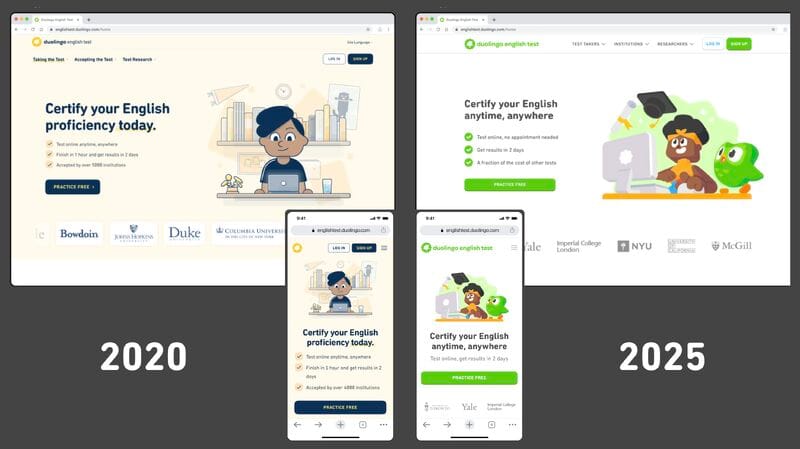Let me take you back to Boston in the 1990s.
I grew up amidst what was arguably one of the most ambitious (and agonizing) public infrastructure projects in U.S. history: the Big Dig. It was a massive, decades-long effort to reroute the city’s central highway underground.
Throughout the project, there were unexpected engineering challenges, traffic delays, countless detours, and constant disruption. But what I remember most clearly were the signs, posted all over the city, with one simple message:
"Rome wasn’t built in a day."
This message was meant to reassure a frustrated public that all of the disruption was worth it. That we were sacrificing present-day convenience to bring about something of lasting importance and positive impact.
For me, it’s become something of a mantra I’ve taken with me into adulthood and my career. Because the truth is, lasting transformation takes time. That was true of the Big Dig, and it’s true for the Duolingo English Test (DET).
When I joined the DET team in early 2018, we were still laying the groundwork, literally explaining to universities what a digital-first English test even was, and more importantly, why it mattered. We had to earn trust the hard way: by listening carefully, piloting programs, relentlessly committing ourselves to quality, and proving that we weren’t just a tech company dabbling with a new product—we were on a mission to transform access to education.
We were also acutely aware that to be taken seriously, the DET would need to distinguish itself from the playful, humorous, and gamified brand that the learning app was developing. So we adopted an entirely different look: a more muted color palette in our designs, a less playful tone in our communications, and no cute green owls in sight.
We took our more serious look out into the world of higher education, setting out to convince university leaders that technology could solve much of what was broken in high stakes testing.
The work was often slow, and almost always relationship-driven. But it added up. Over time, some 5,800 educational programs started accepting the DET as a high stakes test for admissions and we became one of the most popular ways to assess English in the world.
We’ve always been powered by Duolingo
You may have noticed recently the DET has a new look: brighter colors, friendlier design, and yes—Duo the owl has arrived! In short, it feels a lot more like the rest of Duolingo.

This update connects what millions of test takers and over 5,800 institutions already know: the DET brings Duolingo’s values—accessibility, innovation, and openness—into the world of high-stakes testing. The brighter palette isn’t a departure from who we are, because we’ve always been powered by Duolingo.
And while the DET looks a little different now, these changes don’t alter the test itself, or change the humans behind it. The DET remains a secure, valid, and reliable measure of English proficiency, trusted by thousands of institutions around the world. As we continue to take the long view, we remain committed to the same rigor, quality, and service that put the DET at the forefront of English assessment.
This is what real change looks like
At Duolingo, we’re explicit about our commitment to taking the long view. As our handbook says:
“If it helps in the short term but hurts in the long term, it’s not right.”
That’s the kind of thinking that drove this change. A short-term mindset might have kept the DET looking separate, more traditionally “serious” —putting Duo the owl in the corner. But we’re building something meant to last. Something that brings Duolingo’s mission to the world of high-stakes testing. Something that transforms testing, for good.
This evolution wasn’t fast. It wasn’t flashy. But it was intentional. Like the Big Dig, the hardest work happened beneath the surface. And like that project, it changed the landscape forever.
Rome wasn’t built in a day, and we can’t remove all barriers to accessing higher education overnight. But we’re taking the long view to make big changes happen—and they’re worth the wait.
